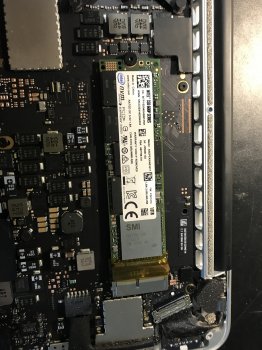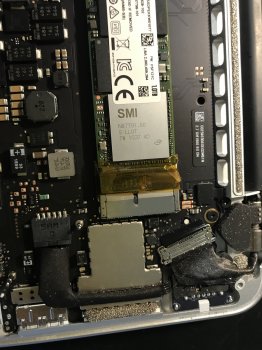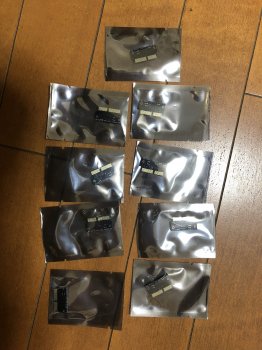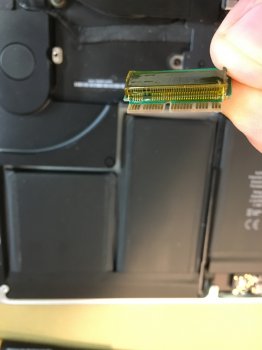Hi All!
Here is an update from me about my experiences so far!
I have the MacBook Pro 2014 Mid, 2.5 Ghz, 15" with Intel Iris graphics 1,5Gbyte and 16gigs of ram
I have the "good" larger green adapter from Sintech. I received the package from Singapore and it contains two screw drivers as well.
I put one layer of Permacel (Kapton) tape under the adapter in order to prevent shorts.
Well first I tried the Samsung EVO 960 1TB. Restored a time machine backup first and then started up Bootcamp Assist in order to partition 250 GB to be used as Windows 10 partition.
Tried clonezilla first but ended up using WinClone Standard. First tried WinClone Basic but found out that I could only make an image file of the internal drive!

So needed to upgrade to Standard - this pisses me off.
I got read speeds of ~1450 and reads about 1350 in Black Magic speed test and everything was fine.
Suddenly I began to experience sudden halts resulting in kernal panics. And strangely these became more and more often until I finally decided that this is not good enough.
Next step was to try the Kingston KC1000 1TB.
Same procedure - restore of time machine backup - but this time I partitioned the disk in Disk administrator to be 700G and 250G. The last being a FAT32. This works better when you restore the Windows partition using WinClone.
This time it seems much better - now no kernel panics

Speeds around 1300 read/write
Day two still performing well - but then after waking from sleep I got kernel panic. Hmmm.
Reboot and then I went into system report to check the NVMe status. Suddenly only connected as x2 and not x4.
Tried Black Magic and now speeds around 750 r/w

- which is a little bit faster than my old 512G Apple Drive.
Now just an hour ago I opened the computer again and put one more layer of Kapton tape under neath the adapter and also som tape on top of the connectors. (This makes no sense

)
So I am trying this finally step now. I can see that I am again only connected x2 so around 750 unfortunately.
So my Macbook randomly negotiates either x2 or x4 speeds when loading the os!
I can kind of live with this if the system is stable and I stop seeing kernel panics.
And I am using this sleep configuration: "sudo pmset -a standby 0"
If this turns out unstable - I will revert back to my old orig 512MByte drive...
Hoping Apple will update the IONVMe driver to be more stable and support the EVO series in the future!!!
Best regards Flemming Dahlhof Jensen - and best of luck






